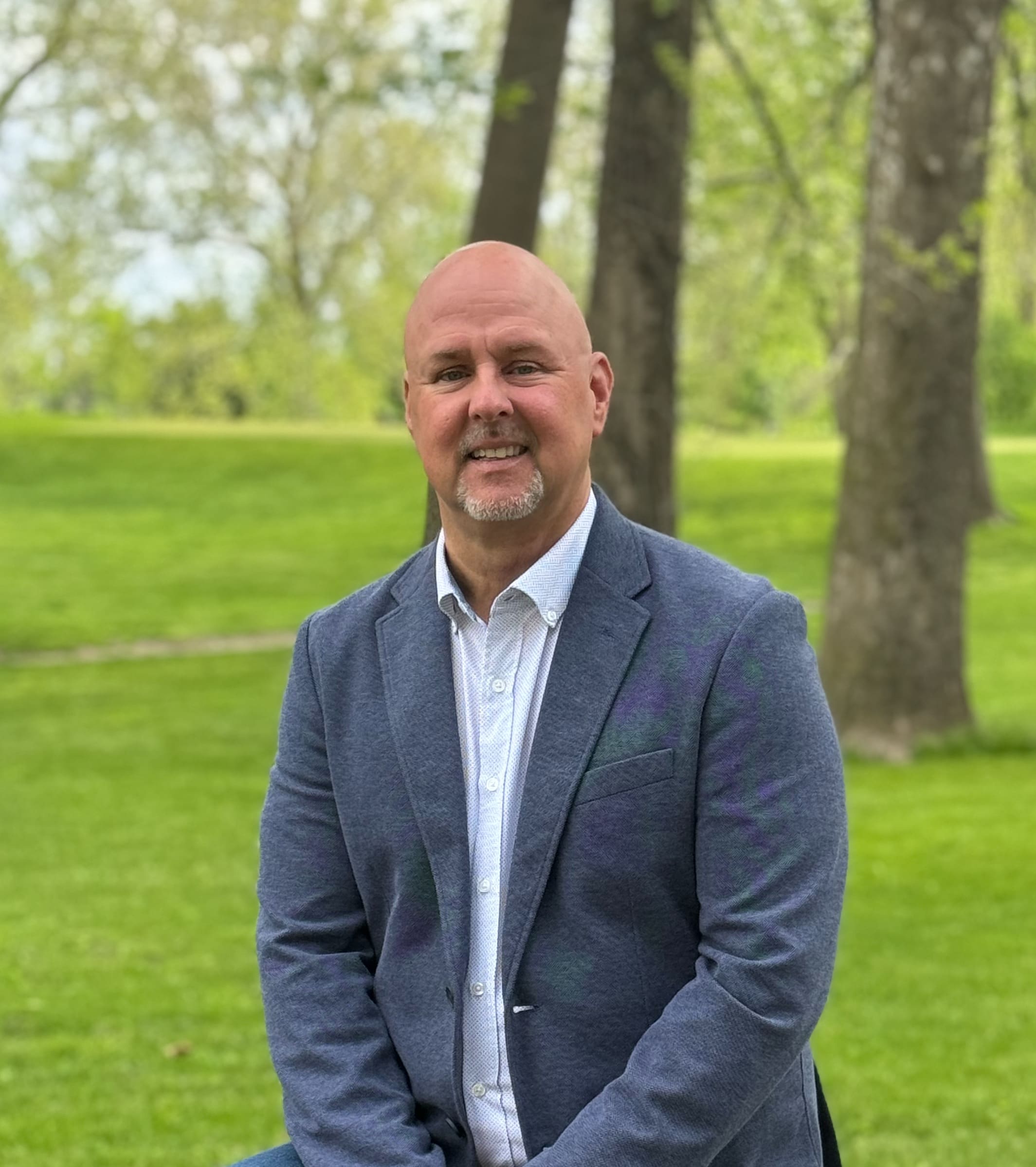“Taking Yourself in Hand”
My inner thirteen-year-old boy spit Mountain Dew everywhere when I came up with this title, but he thinks it is u201cway better than u2018Self-Leadershipu2019 – boring!u201d u00a0Every act of leadership is first an act of self-leadership. Leading change starts with u201ctaking yourself in hand,u201d (snicker, snicker).
n
Change requires leaders
n
I spent a significant part of my long consulting career u201ctrainingu201d leaders. I facilitated leadership workshops at British Airways, General Motors, Short Brothers, BP among other companies. I ran countless leadership team offsites to formulate new strategies, or design new organizations.
n
Eventually, I differentiated between management skill, which focuses on getting work done in a relatively steady state, and leadership skill, which clarifies direction in abnormal states like change, war or emergency, and attracts followers so that u201cpeople move as oneu201d in the new direction – transformation, victory or safety. I emphasized the importance of both skills to the organizations with whom I worked. Some companies were more successful at change than others, but I know I reached many individuals in ways they appreciated.
n
I will always remember the epiphany of one senior manager, who said, u201cI didnu2019t want to attend this session, but I now see that change in this huge corporation comes down to me doing different things or doing things differently. I canu2019t do it myself, but we canu2019t do it without me either.u201d
n
Leadership development
n
Each of these learning interventions was different. Sometimes clients expected a u201csecret sauce,u201d a formula for leadership that had worked many places and would work for them. In my early years, I often used the same themes: vision and visionary communication, empathy, empowerment, trust, tough-mindedness, and exemplary actions. Many of these ideas worked as themes, but the u201ccourse materialsu201d were always different. After all, leadership is steeped in the context of the change. We lead toward something or away from something, but the something is specific.
n
Many organizations, even civilizations have trained leaders. The Periclean Age Athenians educated high potentials in philosophical dialogue and oration and sent them to Eleusis to experience the u201cmysteriesu201d of the cult of Demeter – the cycle of birth, life, death, and rebirth u2013 change and hope apparently aided by ergot fungus.
n
Militaries have always trained their elite corps from the Spartan Hippeis (not u201chippiesu201d), to Romeu2019s Praetorian Guard, to West Point, Annapolis, and the US Airforce Academy. Many business schools, universities, and even high schools offer courses in leadership. Many of these probably teach a combination of management and leadership skill, along with concepts like initiative, proactivity, and prioritization. All good content, but many will still say that u201cleaders are born not made.u201d
n
Self-leadership
n
Great leaders are often portrayed as born with certain virtues. Six-year-old George Washington told his father u201cFather, I cannot tell a lie. It was I who cut down your prize cherry tree with my little hatchet.u201d His father was so impressed with Georgieu2019s honesty that he didnu2019t punish him; perhaps this is where Washingtonu2019s famed magnanimous ideals came from. (My father would have slowly removed his belt.)
n
The cherry tree story showed up in the fifth edition of Mason Locke Weemsu2019 book The Life of Washington, u00a0originally published in 1800, the year of Washingtonu2019s death, under the title The History of the Life, Death, Virtues, and Exploits of General George Washington. Parson Weems was a traveling Episcopal minister, who sold his books on the side. He apparently subscribed to the u201cgreat leaders are bornu201d theory, describing the Presidentu2019s natural honesty, athleticism, temperance, and u201cveneration for the Deity.u201d He missed that Washington overcame dyslexia to teach himself to read. Washingtonu2019s Wisdom came from accepting responsibility for and learning from some colossal mistakes. He single-handedly started the French and Indian War by attacking a French scouting party he could have easily gone around and was strategically cautious in battle thereafter. His motto was u201c99% of failures come from people who make excuses.u201d
n
Twelve-year-old Abraham Lincoln borrowed Parson Weemsu2019 book from a farmer seven miles walk from his home. When the tome got damaged by rain, Lincoln worked for the farmer for three days to repay his debt.
n
Honest Abe is often described as a self-made man. He had no formal Education, but taught himself to read. His voice was often as u201cshrill,u201d or u201creedyu201d or u201csharp and piercing like a boatswainu2019s whistle.u201d Yet he was known as a tremendous orator. u201cHis words rang throughu201d and his enunciation and slow, considered delivery ensured that he was understood.
n
Washington and Lincoln came from vastly different backgrounds, but they each developed themselves. In that sense perhaps all leaders are self-developed, people experienced in u201ctaking themselves in handu201d or first leading themselves before leading others.
n
Taking yourself in hand
n
Even when I get past my teenage boy snickering, itu2019s an unusual phrase for self-leadership. Holding your own hand and leading yourself. We have many such phrases:
n
- n
- u201cPulling yourself up by your bootstrapsu201d has been used as an unrealistic expectations cudgel for the disadvantaged, but expresses personal responsibility and self-reliance.
- u201cSteel yourselfu201d implies determination and self-imposed tough-mindedness that will not accept failure or give up.
- u201cIf at first you donu2019t succeed, try, try againu201d advocates a u201cthere is no failure, but giving upu201d ethos.
- u201cNo. Try not! Do or Do Not. There is no Try!u201d in the words of Yoda from George Lucasu2019s Star Wars.
n
n
n
n
n
Stephen Coveyu2019s Seven Habits of Highly Successful People, is instruction for self-leadership.
n
- n
- n
- n
- Be proactive
- Begin with the end in mind
- Put first things first
- Think win/win
- Seek first to understand, then to make yourself understood
- Learn to synergize
- Sharpen the saw
n
n
n
n
n
n
n
n
n
n
Whether you buy Coveyu2019s recipe for success or leadership or whether you have your own five or seven principles, you only become successful, fulfilled, a leader, by acting, practicing, learning (perceiving and processing), and acting again – in other words,u00a0 by u201ctaking yourself in hand.u201d
n
(Snicker, snicker)
“,”tablet”:”
My inner thirteen-year-old boy spit Mountain Dew everywhere when I came up with this title, but he thinks it is u201cway better than u2018Self-Leadershipu2019 – boring!u201d Every act of leadership is first an act of self-leadership. Leading change starts with u201ctaking yourself in hand,u201d (snicker, snicker).
n
Change requires leaders
n
I spent a significant part of my long consulting career u201ctrainingu201d leaders. I facilitated leadership workshops at British Airways, General Motors, Short Brothers, BP among other companies. I ran countless leadership team offsites to formulate new strategies, or design new organizations.
n
Eventually, I differentiated between management skill, which focuses on getting work done in a relatively steady state, and leadership skill, which clarifies direction in abnormal states like change, war or emergency, and attracts followers so that u201cpeople move as oneu201d in the new direction – transformation, victory or safety. I emphasized the importance of both skills to the organizations with whom I worked. Some companies were more successful at change than others, but I know I reached many individuals in ways they appreciated.
n
I will always remember the epiphany of one senior manager, who said, u201cI didnu2019t want to attend this session, but I now see that change in this huge corporation comes down to me doing different things or doing things differently. I canu2019t do it myself, but we canu2019t do it without me either.u201d
n
Leadership development
n
Each of these learning interventions was different. Sometimes clients expected a u201csecret sauce,u201d a formula for leadership that had worked many places and would work for them. In my early years, I often used the same themes: vision and visionary communication, empathy, empowerment, trust, tough-mindedness, and exemplary actions. Many of these ideas worked as themes, but the u201ccourse materialsu201d were always different. After all, leadership is steeped in the context of the change. We lead toward something or away from something, but the something is specific.
n
Many organizations, even civilizations have trained leaders. The Periclean Age Athenians educated high potentials in philosophical dialogue and oration and sent them to Eleusis to experience the u201cmysteriesu201d of the cult of Demeter – the cycle of birth, life, death, and rebirth u2013 change and hope apparently aided by ergot fungus.
n
Militaries have always trained their elite corps from the Spartan Hippeis (not u201chippiesu201d), to Romeu2019s Praetorian Guard, to West Point, Annapolis, and the US Airforce Academy. Many business schools, universities, and even high schools offer courses in leadership. Many of these probably teach a combination of management and leadership skill, along with concepts like initiative, proactivity, and prioritization. All good content, but many will still say that u201cleaders are born not made.u201d
n
Self-leadership
n
Great leaders are often portrayed as born with certain virtues. Six-year-old George Washington told his father u201cFather, I cannot tell a lie. It was I who cut down your prize cherry tree with my little hatchet.u201d His father was so impressed with Georgieu2019s honesty that he didnu2019t punish him; perhaps this is where Washingtonu2019s famed magnanimous ideals came from. (My father would have slowly removed his belt.)
n
The cherry tree story showed up in the fifth edition of Mason Locke Weemsu2019 book The Life of Washington, originally published in 1800, the year of Washingtonu2019s death, under the title The History of the Life, Death, Virtues, and Exploits of General George Washington. Parson Weems was a traveling Episcopal minister, who sold his books on the side. He apparently subscribed to the u201cgreat leaders are bornu201d theory, describing the Presidentu2019s natural honesty, athleticism, temperance, and u201cveneration for the Deity.u201d He missed that Washington overcame dyslexia to teach himself to read. Washingtonu2019s wisdom came from accepting responsibility for and learning from some colossal mistakes. He single-handedly started the French and Indian War by attacking a French scouting party he could have easily gone around and was strategically cautious in battle thereafter. His motto was u201c99% of failures come from people who make excuses.u201d
n
Twelve-year-old Abraham Lincoln borrowed Parson Weemsu2019 book from a farmer seven miles walk from his home. When the tome got damaged by rain, Lincoln worked for the farmer for three days to repay his debt.
n
Honest Abe is often described as a self-made man. He had no formal education, but taught himself to read. His voice was often as u201cshrill,u201d or u201creedyu201d or u201csharp and piercing like a boatswainu2019s whistle.u201d Yet he was known as a tremendous orator. u201cHis words rang throughu201d and his enunciation and slow, considered delivery ensured that he was understood.
n
Washington and Lincoln came from vastly different backgrounds, but they each developed themselves. In that sense perhaps all leaders are self-developed, people experienced in u201ctaking themselves in handu201d or first leading themselves before leading others.
n
Taking yourself in hand
n
Even when I get past my teenage boy snickering, itu2019s an unusual phrase for self-leadership. Holding your own hand and leading yourself. We have many such phrases:
n
- n
- u201cPulling yourself up by your bootstrapsu201d has been used as an unrealistic expectations cudgel for the disadvantaged, but expresses personal responsibility and self-reliance.
- u201cSteel yourselfu201d implies determination and self-imposed tough-mindedness that will not accept failure or give up.
- u201cIf at first you donu2019t succeed, try, try againu201d advocates a u201cthere is no failure, but giving upu201d ethos.
- u201cNo. Try not! Do or Do Not. There is no Try!u201d in the words of Yoda from George Lucasu2019s Star Wars.
n
n
n
n
n
Stephen Coveyu2019s Seven Habits of Highly Successful People, is instruction for self-leadership.
n
- n
- n
- n
- Be proactive
- Begin with the end in mind
- Put first things first
- Think win/win
- Seek first to understand, then to make yourself understood
- Learn to synergize
- Sharpen the saw
n
n
n
n
n
n
n
n
n
n
Whether you buy Coveyu2019s recipe for success or leadership or whether you have your own five or seven principles, you only become successful, fulfilled, a leader, by acting, practicing, learning (perceiving and processing), and acting again – in other words, by u201ctaking yourself in hand.u201d
n
(Snicker, snicker)
“}},”slug”:”et_pb_text”}” data-et-multi-view-load-tablet-hidden=”true”>
My inner thirteen-year-old boy spit Mountain Dew everywhere when I came up with this title, but he thinks it is “way better than ‘Self-Leadership’ – boring!” Every act of leadership is first an act of self-leadership. Leading change starts with “taking yourself in hand,” (snicker, snicker).
Change requires leaders
I spent a significant part of my long consulting career “training” leaders. I facilitated leadership workshops at British Airways, General Motors, Short Brothers, BP among other companies. I ran countless leadership team offsites to formulate new strategies, or design new organizations.
Eventually, I differentiated between management skill, which focuses on getting work done in a relatively steady state, and leadership skill, which clarifies direction in abnormal states like change, war or emergency, and attracts followers so that “people move as one” in the new direction – transformation, victory or safety. I emphasized the importance of both skills to the organizations with whom I worked. Some companies were more successful at change than others, but I know I reached many individuals in ways they appreciated.
I will always remember the epiphany of one senior manager, who said, “I didn’t want to attend this session, but I now see that change in this huge corporation comes down to me doing different things or doing things differently. I can’t do it myself, but we can’t do it without me either.”
Leadership development
Each of these learning interventions was different. Sometimes clients expected a “secret sauce,” a formula for leadership that had worked many places and would work for them. In my early years, I often used the same themes: vision and visionary communication, empathy, empowerment, trust, tough-mindedness, and exemplary actions. Many of these ideas worked as themes, but the “course materials” were always different. After all, leadership is steeped in the context of the change. We lead toward something or away from something, but the something is specific.
Many organizations, even civilizations have trained leaders. The Periclean Age Athenians educated high potentials in philosophical dialogue and oration and sent them to Eleusis to experience the “mysteries” of the cult of Demeter – the cycle of birth, life, death, and rebirth – change and hope apparently aided by ergot fungus.
Militaries have always trained their elite corps from the Spartan Hippeis (not “hippies”), to Rome’s Praetorian Guard, to West Point, Annapolis, and the US Airforce Academy. Many business schools, universities, and even high schools offer courses in leadership. Many of these probably teach a combination of management and leadership skill, along with concepts like initiative, proactivity, and prioritization. All good content, but many will still say that “leaders are born not made.”
Self-leadership
Great leaders are often portrayed as born with certain virtues. Six-year-old George Washington told his father “Father, I cannot tell a lie. It was I who cut down your prize cherry tree with my little hatchet.” His father was so impressed with Georgie’s honesty that he didn’t punish him; perhaps this is where Washington’s famed magnanimous ideals came from. (My father would have slowly removed his belt.)
The cherry tree story showed up in the fifth edition of Mason Locke Weems’ book The Life of Washington, originally published in 1800, the year of Washington’s death, under the title The History of the Life, Death, Virtues, and Exploits of General George Washington. Parson Weems was a traveling Episcopal minister, who sold his books on the side. He apparently subscribed to the “great leaders are born” theory, describing the President’s natural honesty, athleticism, temperance, and “veneration for the Deity.” He missed that Washington overcame dyslexia to teach himself to read. Washington’s wisdom came from accepting responsibility for and learning from some colossal mistakes. He single-handedly started the French and Indian War by attacking a French scouting party he could have easily gone around and was strategically cautious in battle thereafter. His motto was “99% of failures come from people who make excuses.”
Twelve-year-old Abraham Lincoln borrowed Parson Weems’ book from a farmer seven miles walk from his home. When the tome got damaged by rain, Lincoln worked for the farmer for three days to repay his debt.
Honest Abe is often described as a self-made man. He had no formal education, but taught himself to read. His voice was often as “shrill,” or “reedy” or “sharp and piercing like a boatswain’s whistle.” Yet he was known as a tremendous orator. “His words rang through” and his enunciation and slow, considered delivery ensured that he was understood.
Washington and Lincoln came from vastly different backgrounds, but they each developed themselves. In that sense perhaps all leaders are self-developed, people experienced in “taking themselves in hand” or first leading themselves before leading others.
Taking yourself in hand
Even when I get past my teenage boy snickering, it’s an unusual phrase for self-leadership. Holding your own hand and leading yourself. We have many such phrases:
- “Pulling yourself up by your bootstraps” has been used as an unrealistic expectations cudgel for the disadvantaged, but expresses personal responsibility and self-reliance.
- “Steel yourself” implies determination and self-imposed tough-mindedness that will not accept failure or give up.
- “If at first you don’t succeed, try, try again” advocates a “there is no failure, but giving up” ethos.
- “No. Try not! Do or Do Not. There is no Try!” in the words of Yoda from George Lucas’s Star Wars.
Stephen Covey’s Seven Habits of Highly Successful People, is instruction for self-leadership.
- Be proactive
- Begin with the end in mind
- Put first things first
- Think win/win
- Seek first to understand, then to make yourself understood
- Learn to synergize
- Sharpen the saw
Whether you buy Covey’s recipe for success or leadership or whether you have your own five or seven principles, you only become successful, fulfilled, a leader, by acting, practicing, learning (perceiving and processing), and acting again – in other words, by “taking yourself in hand.”
(Snicker, snicker)
The post “Taking Yourself in Hand” appeared first on Wisdom from Unusual Places.
Originally Published on https://wisdomfromunusualplaces.com/blog/


























